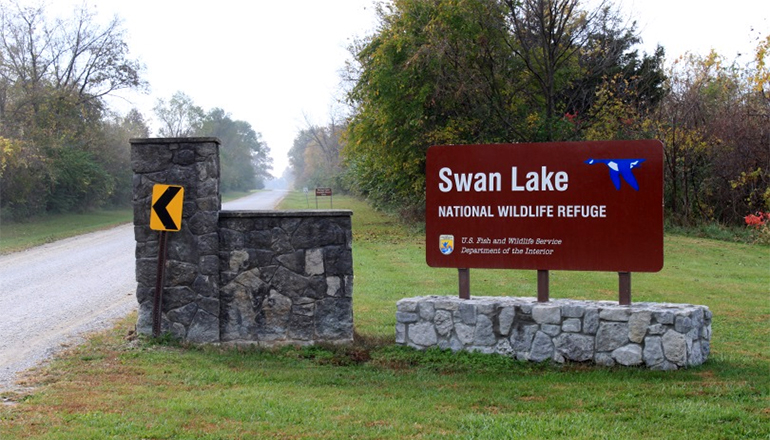This past May and June the Grand River had near-record flooding. These floodwaters created major damage to the levee tops and roads at the refuge. Since that time Swan Lake staff have had to make pretty major repairs to the roads and levees, which forced the closure of the refuge until those repairs could be made. Most of the work has been completed on the public use roads and they still are working on the management levees that are managed for waterfowl during fall migration.
During the flood, the refuge Visitor Center was also flooded forcing staff to move everything out and abandon the building as the cost of repairs were going to be extensive. The plan is to replace the Visitor Center and relocate it onto higher ground so it will not endanger of flooding in the future. In the meantime, the refuge administrative headquarters is located in the refuge bunkhouse near the maintenance shop area.
If you have questions please contact Refuge Manager Steve Whitson at (660) 856-3323.
Swan Lake National Wildlife Refuge is located one mile south of Sumner, Missouri and managed by the U.S. Fish and Wildlife Service as a unit of the National Wildlife Refuge System. The U.S. Fish and Wildlife Service is the principal federal agency responsible for conserving, protecting and enhancing fish, wildlife and plants and their habitats for the continuing benefit of the American people. The Service manages the 97-million-acre National Wildlife Refuge System, which encompasses 548 national wildlife refuges, thousands of small wetlands and other special management areas. It also operates 69 national fish hatcheries, 64 fishery resources offices, and 81 ecological services field stations.
The agency enforces federal wildlife laws, administers the Endangered Species Act, manages migratory bird populations, restores nationally significant fisheries, conserves and restores wildlife habitat such as wetlands, and helps foreign and Native American tribal governments with their conservation efforts. It also oversees the Federal Assistance program, which distributes hundreds of millions of dollars in excise taxes on fishing and hunting equipment to state fish and wildlife agencies.







